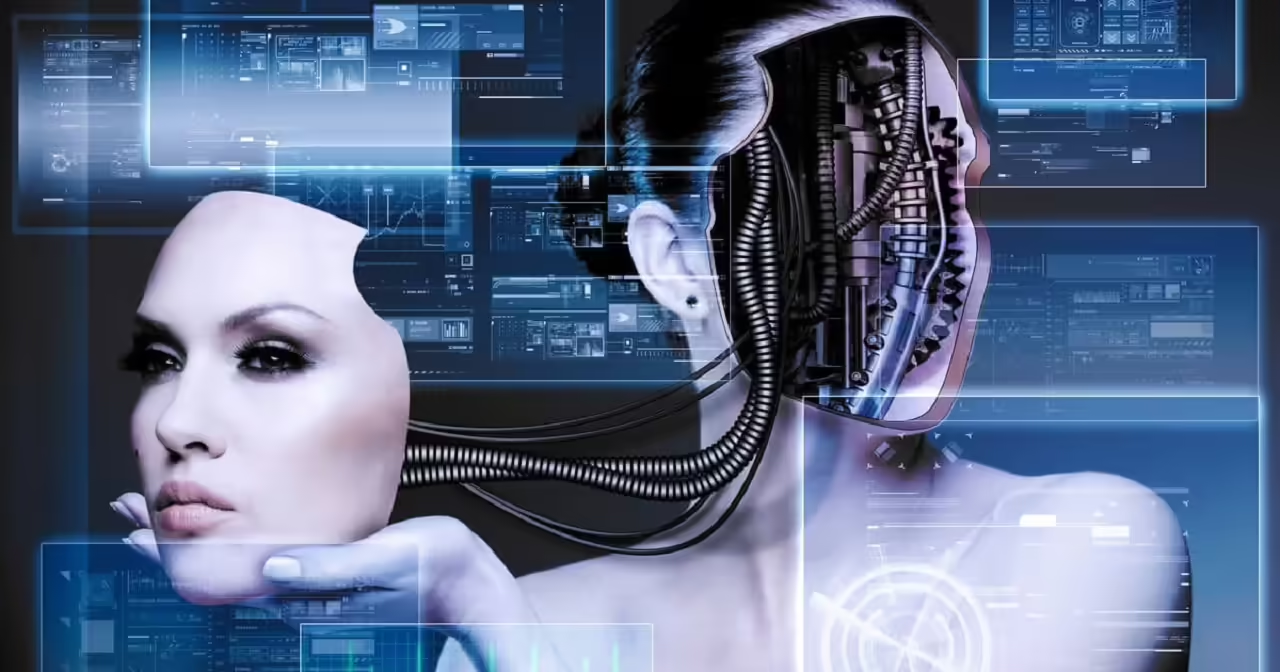
What is Machine Unlearning?
The advancement of artificial intelligence (AI) has transformed countless aspects of our daily and professional lives. From task automation to behavior prediction, machine learning algorithms have proven to be powerful tools. However, as these technologies become increasingly integrated into our lives, a critical need arises: machine unlearning.
Machine unlearning refers to the process by which an AI system removes or “unlearns” previously acquired information. This concept has become especially relevant with the introduction of regulations such as the General Data Protection Regulation (GDPR) in the European Union, which grants individuals the right to be forgotten by systems that store and process their personal data. In essence, machine unlearning allows an AI model to eliminate specific data or adjust its behavior to ensure that the deleted information does not influence its future decisions or predictions.
Relevance in the Current Context
The importance of machine unlearning can be better understood by considering several key factors:
Privacy and Regulations
Privacy laws, such as the GDPR, require companies and organizations to manage personal data responsibly. This includes the ability to delete data at the user’s request. Machine unlearning ensures that when this data is deleted, the AI models do not indirectly retain the deleted information in their parameters.
Bias and Error Correction
AI models can be biased due to the data they are trained on. If certain data is found to introduce biases or errors, it is crucial to be able to remove it and adjust the model accordingly. Machine unlearning enables continuous correction and improvement of models, ensuring fairer and more accurate decisions.
Updating and Adaptability
In a constantly changing world, information and data quickly become obsolete. Machine unlearning facilitates the continuous updating of models, ensuring they remain relevant and accurate by discarding outdated or irrelevant data.
Challenges of Machine Unlearning
Implementing machine unlearning is not without its challenges. Some of the most notable include:
Unlearning Techniques
Developing efficient and effective techniques for models to “unlearn” specific data is an active area of research. This includes methods to identify and eliminate the influence of particular data without needing to retrain the entire model from scratch.
Maintaining Model Integrity
It is crucial to ensure that the unlearning process does not degrade the model’s accuracy and effectiveness. Finding the balance between deleting data and maintaining the model’s integrity is a significant technical challenge.
Distributed Data Management
In systems where data is distributed across multiple locations or among multiple stakeholders, coordinating unlearning can be complex. This requires solutions that can operate efficiently in distributed data environments.
The Need for Forgetting in Artificial Intelligence
Forgetting in artificial intelligence, or machine unlearning, is a fundamental process that ensures AI systems can remove specific information from their databases and models. This concept is crucial not only for complying with legal regulations but also for maintaining relevance, accuracy, and ethics in the use of AI.
Reasons and Situations Where Unlearning is Necessary
Compliance with Privacy Regulations
Regulations like the General Data Protection Regulation (GDPR) in the European Union establish the right of individuals to be forgotten. This means companies must have the ability to delete personal data at the user’s request. Machine unlearning ensures that AI systems can effectively meet these legal demands.
Correction of Bias and Discrimination
Training data can contain inherent biases that are reflected in the AI model’s decisions. If these biases are identified, it is crucial to be able to remove the problematic data and adjust the model accordingly. This is vital to avoid discriminatory decisions and to promote fairness and justice in AI applications.
Updating Obsolete Information
In many cases, the information used to train AI models can become obsolete or irrelevant over time. Unlearning allows models to discard this old data, ensuring that predictions and decisions are based on the most recent and relevant information.
Error Correction in Data
Errors in training data can lead to incorrect predictions and decisions. If errors in the data are detected, it is essential to be able to remove them and adjust the model to improve its accuracy and reliability.
Data Consent Management
In environments where consent for data use can be revoked, machine unlearning allows systems to delete data from users who have withdrawn their consent. This is crucial for maintaining trust and regulatory compliance.
Problems That Can Arise if an AI Cannot Forget
Privacy Violations
Without the ability to forget data, AIs can indefinitely retain personal information, violating users’ privacy rights. This can result in legal sanctions and loss of user trust.
Persistence of Bias and Discrimination
The inability to delete biased data can perpetuate discriminatory and biased decisions. This is not only ethically problematic but can also result in negative legal and reputational consequences for organizations.
Decisions Based on Obsolete Information
Models that cannot forget old data may make predictions based on outdated information, leading to incorrect or ineffective decisions. This is especially critical in sectors like healthcare, finance, and logistics, where accuracy is essential.
Accumulation of Errors
If errors in data cannot be corrected through unlearning, these errors will accumulate and degrade the model’s quality. This affects trust in AI decisions and can result in harmful outcomes.
Storage and Data Management Issues
Indefinite data storage can create management problems and high costs. Additionally, it increases the attack surface for potential security breaches, putting sensitive user information at risk.
Examples of Real Problems
Legal and Reputational Cases: Companies that have failed to delete personal data have faced significant fines and lawsuits under the GDPR. For example, large fines for tech companies failing to comply with user data deletion requests.
Discriminatory Decisions: Recruitment algorithms that cannot eliminate biased data have perpetuated discriminatory practices, such as favoring certain demographic groups over others.
Medical Errors: In healthcare, the inability to delete incorrect data can lead to erroneous diagnoses or inappropriate treatments, endangering patients’ lives.
Techniques and Methods of Unlearning in AI Systems
Machine unlearning is an active and critical area of research for the responsible evolution of artificial intelligence. As stricter regulations on privacy and data management are established, and the need to maintain fairness and accuracy in AI models increases, various techniques are being developed to implement unlearning. Below, some of the most relevant methods are described and their efficiencies and applications compared.
Machine Unlearning Methods
Complete Retraining Description: The most straightforward method for implementing unlearning is to retrain the model from scratch with the original dataset minus the data to be forgotten.
Advantages:
- Precision: Ensures that the model contains no influence from the deleted data.
- Conceptual Simplicity: Easy to understand and apply in terms of concept.
Disadvantages:
- Computationally Expensive: Retraining a model from scratch can be very costly and slow, especially for large and complex models.
- Inefficient: Not practical for systems that require frequent data updates.
Incremental Unlearning
Description: Instead of retraining the model from scratch, incremental unlearning adjusts the existing model’s parameters to remove the influence of specific data.
Advantages:
- Efficiency: Less computationally expensive compared to complete retraining.
- Speed: Allows for faster and continuous updates.
Disadvantages:
- Complexity: More complex to implement and may require advanced techniques to ensure that the deleted data does not leave traces in the model.
- Variable Precision: May not be as precise as complete retraining in certain cases.
Distance-Based Unlearning
Description: This approach uses deep learning techniques to adjust the model’s weights so that the data to be forgotten has minimal influence, for example, by minimizing the distance in the feature space between the representations of the data to be deleted and a neutral point.
Advantages:
- Efficiency: Faster than complete retraining.
- Flexibility: Can be adapted for different types of models and data.
Disadvantages:
- Computational Complexity: Requires advanced techniques and can be complicated to implement.
- Precision: Depending on the exact method, precision can be an issue.
Regularization-Based Methods
Description: These methods add regularization terms to the learning process that penalize the influence of the data to be forgotten. This can include techniques such as penalizing changes in the model parameters related to the data to be deleted.
Advantages:
- Computational Efficiency: Less expensive than complete retraining.
- Control: Allows granular control over which data is being deleted and how.
Disadvantages:
- Technical Complexity: Requires careful implementation and can be difficult to fine-tune.
- Variable Effectiveness: Effectiveness depends on the correct configuration of the regularization parameters.
Gradient Reversal Techniques
Description: This method involves reversing the effects of the learning done with the data to be deleted, using gradient adjustment techniques.
Advantages:
- Precision: Can be very precise in removing the specific influence of certain data.
- Efficiency: Faster than retraining from scratch.
Disadvantages:
- Algorithmic Complexity: Technically complex and may not be applicable to all types of models.
- Stability: Can be unstable and difficult to control.
| Method | Precision | Computational Efficiency | Technical Complexity | Applications |
|---|---|---|---|---|
| Complete Retraining | High | Low | Low | Cases where precision is critical and computational cost is manageable. |
| Incremental Unlearning | Medium | Medium | Medium | Systems requiring rapid and continuous updates. |
| Distance-Based Unlearning | Medium-High | Medium | High | Model- and data-specific, adaptable to various applications. |
| Regularization-Based Methods | Medium | High | High | Situations requiring granular control over the unlearning process. |
| Gradient Reversal Techniques | High | Medium | Very High | Critical applications where unlearning precision is fundamental. |
Practical Applications of Machine Unlearning
Machine unlearning has practical applications in various industries, where it is essential to comply with privacy regulations, improve model fairness, and maintain the relevance of the information used. Below are specific examples of how unlearning is applied in the industry, focusing on data privacy and the right to be forgotten.
Data Privacy and the Right to be Forgotten
Industry: Technology and Social Networks Use Case: Platforms like Google, Facebook, and Twitter handle enormous amounts of personal user data. With the implementation of regulations such as the GDPR, users have the right to request that their data be deleted from these systems. This includes not only deleting data in databases but also ensuring that AI models using this data do not retain any influence from the deleted information.
Application of Unlearning:
- Deletion Request: A user requests the deletion of their personal data from the platform.
- Unlearning: The platform uses unlearning methods, such as partial retraining or incremental adjustment, to ensure that recommendation and advertising models no longer consider the deleted user’s data.
- Verification: Audits and tests are conducted to ensure that the models retain no influence from the deleted data.
Bias Correction in Recruitment Systems Industry
Human Resources Use Case: Automated recruitment systems use machine learning algorithms to evaluate resumes and select candidates. If a model is found to have a bias favoring certain demographic groups over others, it is crucial to eliminate these biases to ensure a fair hiring process.
Application of Unlearning:
- Bias Identification: Data that introduces biases is identified through audits and analysis.
- Unlearning: Incremental unlearning methods are applied to adjust the model and remove the influence of biased data.
- Continuous Evaluation: Continuous monitoring mechanisms are implemented to ensure the model remains bias-free, allowing for quick adjustments as needed.
Updating Obsolete Information in Finance Industry
Finance Use Case: Financial prediction models use large volumes of historical data to forecast market trends, credit risks, and other financial aspects. Over time, some of this information becomes obsolete and can negatively impact model accuracy.
Application of Unlearning:
- Identification of Obsolete Data: Outdated data is identified through analysis of historical data and market changes.
- Unlearning: Distance-based unlearning methods are used to adjust the models, removing the influence of obsolete data.
- Partial Retraining: Partial retraining with more recent data is conducted to update and improve the model’s accuracy.
Healthcare Use Case
AI systems used for medical diagnostics can make errors due to incorrect or mislabeled data. It is essential to quickly correct these errors to ensure accurate and effective diagnostics.
Application of Unlearning:
- Error Detection: Erroneous data is identified through audits and expert reviews.
- Unlearning: Incremental unlearning and gradient reversal methods are used to eliminate the influence of erroneous data from the model.
- Model Update: The model is retrained with correct and updated data, ensuring that future diagnostics are accurate.
Consent Management in Personalized Marketing Industry
Marketing Use Case: Personalized marketing platforms use user data to create targeted campaigns. If a user revokes their consent for data use, the platform must ensure that all related information is deleted.
Application of Unlearning:
- Consent Revocation: A user revokes their consent for the use of their personal data.
- Unlearning: Regularization-based unlearning methods are used to adjust marketing models and eliminate the influence of the user’s data.
- Validation: Tests are conducted to ensure that marketing models no longer use the user’s data in their decisions.







